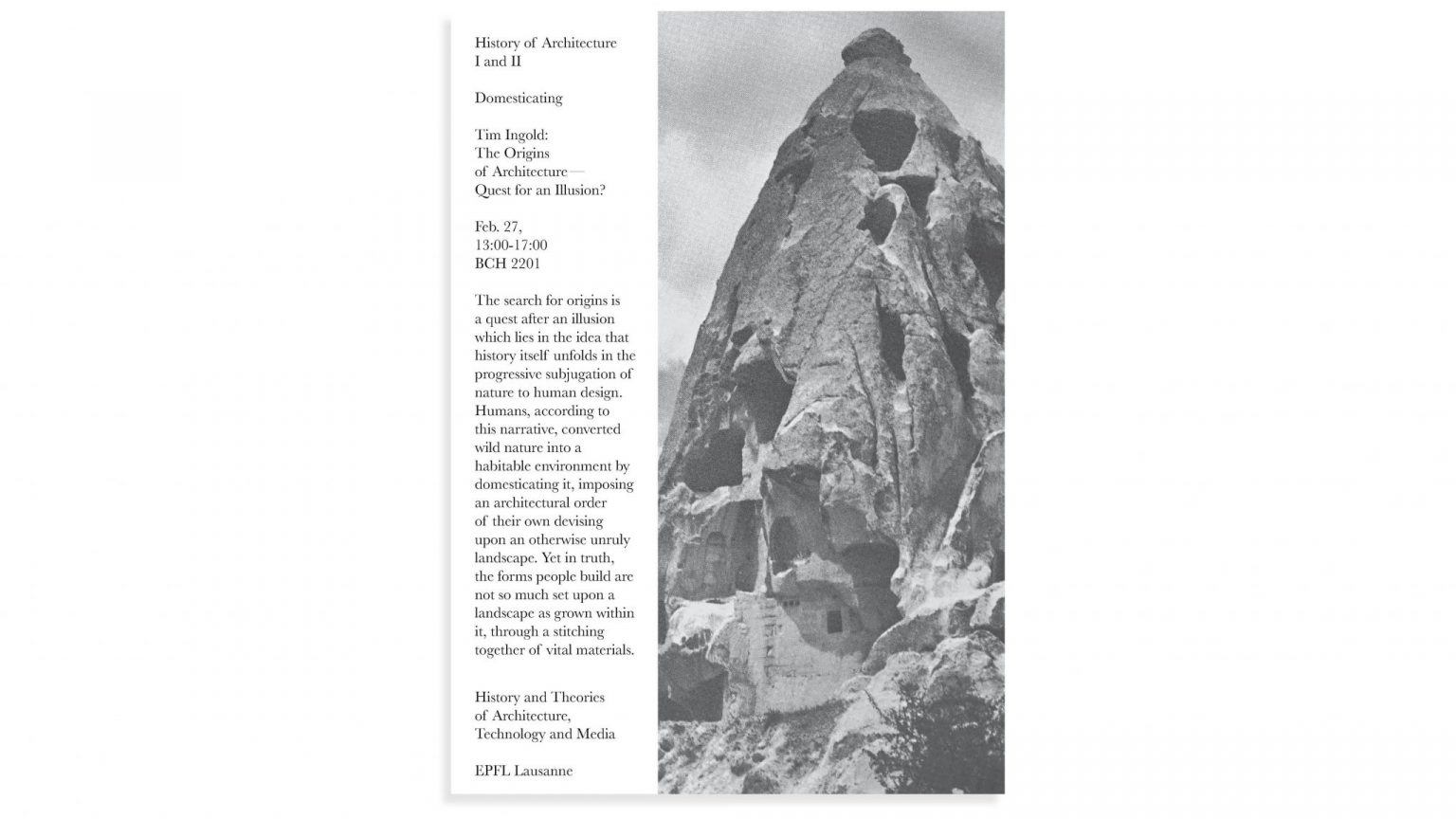Guest Lecture by Tim Ingold

Goreme cones sculpted by nature. Source: Bernard Rudofsky, Architecture without Architects. An introduction to non-pedigreed architecture, Museum of Modern Art, 1964.
The Origins of Architecture: Quest for an Illusion?
Creatures of many kinds build structures in which to live and work. Are these structures instances of architecture? If so, then a search for architectural origins would send us deep into the archives of evolutionary phylogeny. For most students of animal behaviour, however, such structures are extended expressions of species-specific designs as immutable as the body-plans of the creatures themselves, and evolve only as they do. For historians of architecture, by contrast, there came a decisive turning-point when our earliest human ancestors began to take thought about building, becoming the authors of their own designs, conceived in advance of their material realisation. The origins of architecture are supposed to lie at this point, where the history of built form took over from its evolution. Despite speculations about the ‘first hut’, however, and the efforts of archaeologists to uncover its footprint in the prehistoric record, the point of origin has proved elusive. This is for the simple reason that no such point exists. The search for origins is a quest after an illusion. The source of the illusion lies in the retrojection, into human history, of a universalist notion of humanity introduced by philosophers of the European Enlightenment some three centuries ago, according to which history itself unfolds in the progressive subjugation of nature to human design. Humans, according to this narrative, converted wild nature into a habitable environment by domesticating it, imposing an architectural order of their own devising upon an otherwise unruly landscape. Yet in truth, the forms people build are not so much set upon a landscape as grown within it, through a stitching together of vital materials. As in the case of the conical lodge, traditionally used by Indigenous hunters and pastoralists around the circumpolar North, the building emerges as a nexus of materials in a world of earth and sky.This casts the idea of making home, or domestication, in an entirely new light.